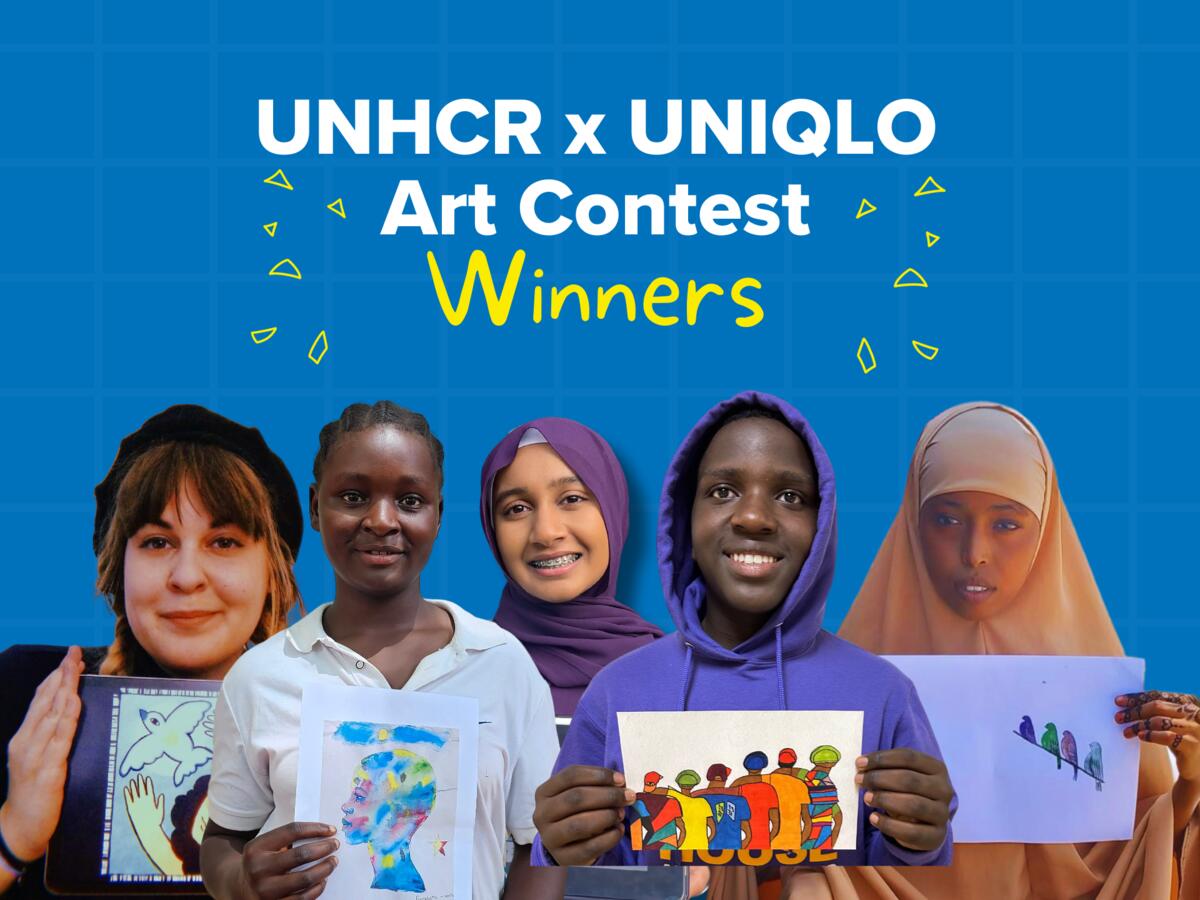Congolese artist wins acclaim for canvasses of his life as a refugee
Congolese artist wins acclaim for canvasses of his life as a refugee

LUGUFU REFUGEE CAMP, Tanzania, July 13 (UNHCR) - When Milus paints, people notice: his technique of blending water colour and oil has become his trademark. But while the Congolese artist once painted a president, today his canvasses are filled with images of his flight from home and life as a refugee in Tanzania.
And they are attracting a lot of attention. The European Commission held a very successful exhibition of his work in France last year and the International Committee of the Red Cross plans to display Milus's art later this year in the coastal Tanzanian city of Dar es Salaam.
Milus was unable to attend the show in France because he lives with his wife and three children in the isolated Lugufu refugee camp in western Tanzania. Getting a permit to travel outside is difficult, but he does have photographs of the event. A shy man, it is not clear if he will try and attend the exhibition in Dar es Salaam.
Sales of his art - mainly to foreign collectors - help make camp life easier. Prices range from 500 Tanzanian shillings (40 US cents) for a postcard-sized painting to 10,000 shillings (US$8) for a large canvas. Milus uses the money to feed and clothe the family and send his children to school. Although life is hard, he knows that he has it easy compared to others in the camp.
Life was a lot different a decade ago in his homeland, Democratic Republic of the Congo (DRC), where he was a national celebrity after painting the portrait of the country's autocratic President Mobutu Sese Seko. Born Lumona Milusi Milundu in Uvira on Lake Tanganyika in the 1950s, Milus attended a technical school in the Burundian capital, Bujumbura.
After honing his skills as an artist, Milus moved back across the border and began making a name for himself. In 1985, he was summoned to the town of Goma on Lake Kivu to paint the president. "I was very happy that the government selected me to paint his portrait," Milus recalls.
But in 1997, rebel leader Laurent Kabila ended Mobutu's 32-year rule over the former Belgian colony that he had renamed Zaire. Though the name of the country changed again under Kabila, the hardships facing the people did not. Milus and many others fled to neighbouring countries in 1997 to escape renewed fighting in the east between Kabila's forces and former allies. Greed for power and DRC's natural resources fuelled the conflict.
Nine years later, Milus, his family, and some 86,000 other Congolese still reside in Lugufu refugee camp. Though he no longer paints VIPs, Milus uses his talent to share with the world what it means to be a refugee. His paintings show his flight from DRC and the daily camp chores of gathering firewood and fetching water.
They also bring comfort to his fellow-refugees in Lugufu. Many people in the camp seem to know where his shelter is and the images of camp life that Milus now focuses on help him and them come to terms with their daily life.

Milus's artistic pastime helps keep him occupied and hopeful. It seems that there is light at the end of the tunnel. Cheered on by camp refugees, convoys have been leaving Lugufu for DRC carrying those who feel it is now safe enough to go back home and rebuild their lives in freedom.
Milus awaits his turn. "When I return back home to the Congo, I will continue painting." He knows where his future lies, but he is not quite ready to take that final step.
By Tyler Holden in Lugufu Refugee Camp, Tanzania









